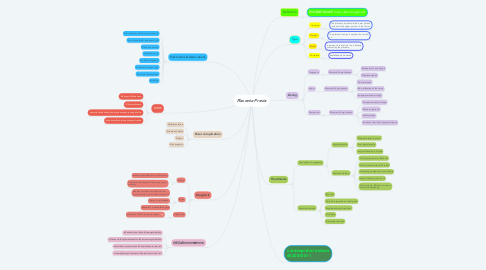
1. Risk factors & Associations
1.1. Prior cesarean delivery/myomectomy
1.2. Prior previa (4-8% recurrence risk)
1.3. Previous abortion
1.4. Increased parity
1.5. Multiple pregnancy
1.6. Advanced maternal age
1.7. Abnormal presentation
1.8. Smoking
2. อาการ
2.1. มีเลือดออก สีเลือดแดงสด
2.2. ไม่มีอาการเจ็บครรภ์
2.3. ปริมาณเลือดที่ออกขึ้นอยู่กับการเปิดขยายของปากมดลูกแต่ละคน
2.4. ส่วนน้อยอาจมีอาการเจ็บครรภ์คลอดร่วมด้วย
3. Fetal complication
3.1. Malpresentation
3.2. Intrauterine death
3.3. Preterm
3.4. Birth asphyxia
4. Diagnosis
4.1. History
4.1.1. Bleeding episodes (amount,duration)
4.1.2. Painless hemorrhage At late pregnancy or delivery
4.2. Signs
4.2.1. General condition and anaemia are proprotionate to the visible blood loss
4.2.2. Uterus is soft,relaxed
4.2.3. ตรวจท่าที่ 3,4 พบเด็กไม่ engaเe
4.3. Ultrasound
4.3.1. abdominal 95% accurate to detect
5. ข้อวินิจฉัยทางการพยาบาล
5.1. เสี่ยงต่อการเกิดภาวะช็อคเนื่องจากสูญเสียเลือด
5.2. เสี่ยงต่อทารกในครรภ์พร่องออกซิเจนเนื่องจากมารดาสูญเสียเลือด
5.3. กลัวและกังวลตนเองและบุตรจะมีอันตรายเนื่องจากรกเกาะต่ำ
5.4. ขาดความรู้ในการดูแลตนเองขณะตั้งครรภ์จากภาวะรกเกาะต่ำ
6. Definition
6.1. มีการฝังตัวของรกที่ lower uterine segment
7. Type
7.1. Low lying
7.1.1. The placenta implants in the lower portion instead of the upper portion of the uterus.
7.2. Marginal
7.2.1. The placenta's edge is nearing the cervical os.
7.3. Partial
7.3.1. A portion of the cervical os is already covered by the placenta.
7.4. Complete
7.4.1. รกฝังตัวคลุม os หมดเลย
8. During
8.1. Pregnancy
8.1.1. Maternal Complications
8.1.1.1. Antepartum hemorrhage
8.1.1.2. Malpresentation
8.2. Labor
8.2.1. Maternal Complications
8.2.1.1. Cord prolapse
8.2.1.2. Slow dilatation of the cervix
8.2.1.3. Intrapartum haemorrhage
8.3. Puerperium
8.3.1. Maternal Complications
8.3.1.1. Postpartum haemorrhage
8.3.1.2. Retained placenta
8.3.1.3. Subinvolution
8.3.1.4. Increases the risk of puerperal sepsis
9. Treatments
9.1. Termination of pregnancy
9.1.1. vaginal delivery
9.1.1.1. Marginal placenta previa
9.1.1.2. Low lying placenta
9.1.1.3. vaginal bleeding is limited
9.1.2. Cesarean delivery
9.1.2.1. Total placenta previa (36th wk)
9.1.2.2. Partial placenta previa (37th wk)
9.1.2.3. Preventing postpartum hemorrhage
9.1.2.4. Heavy bleeding with shock
9.1.2.5. Hysterectomy: Placenta accreta or uncontroled bleeding
9.2. Expectant therapy
9.2.1. Bed rest
9.2.2. Periodic inspection of vulvul pads
9.2.3. Supplementary haematinics
9.2.4. Tocolytics
9.2.5. Preventing infection
